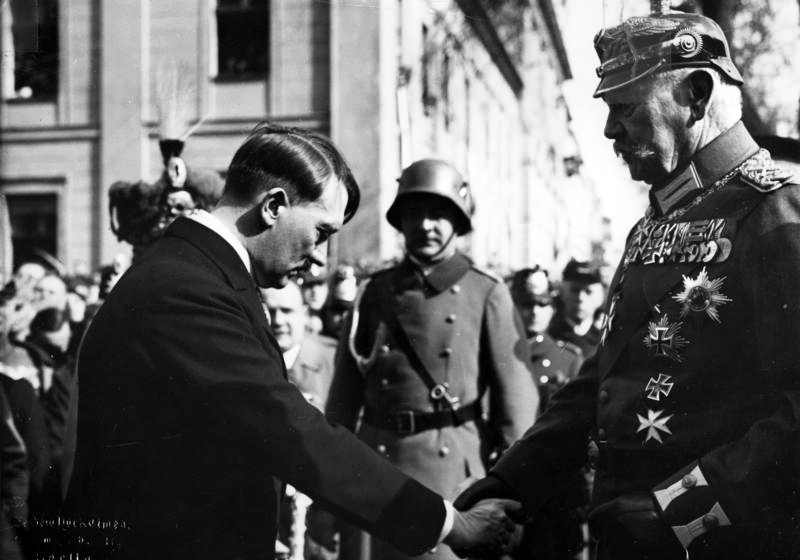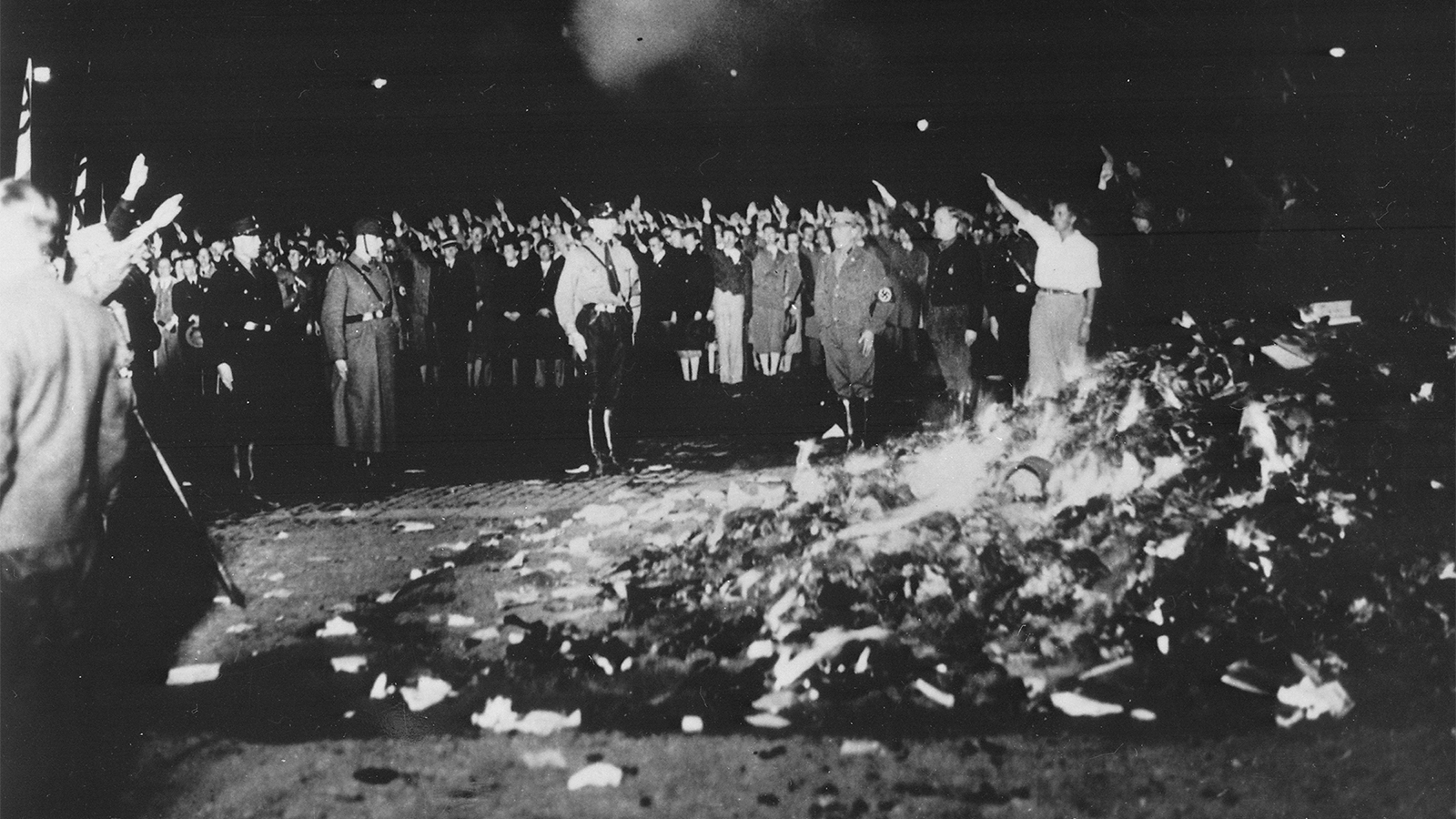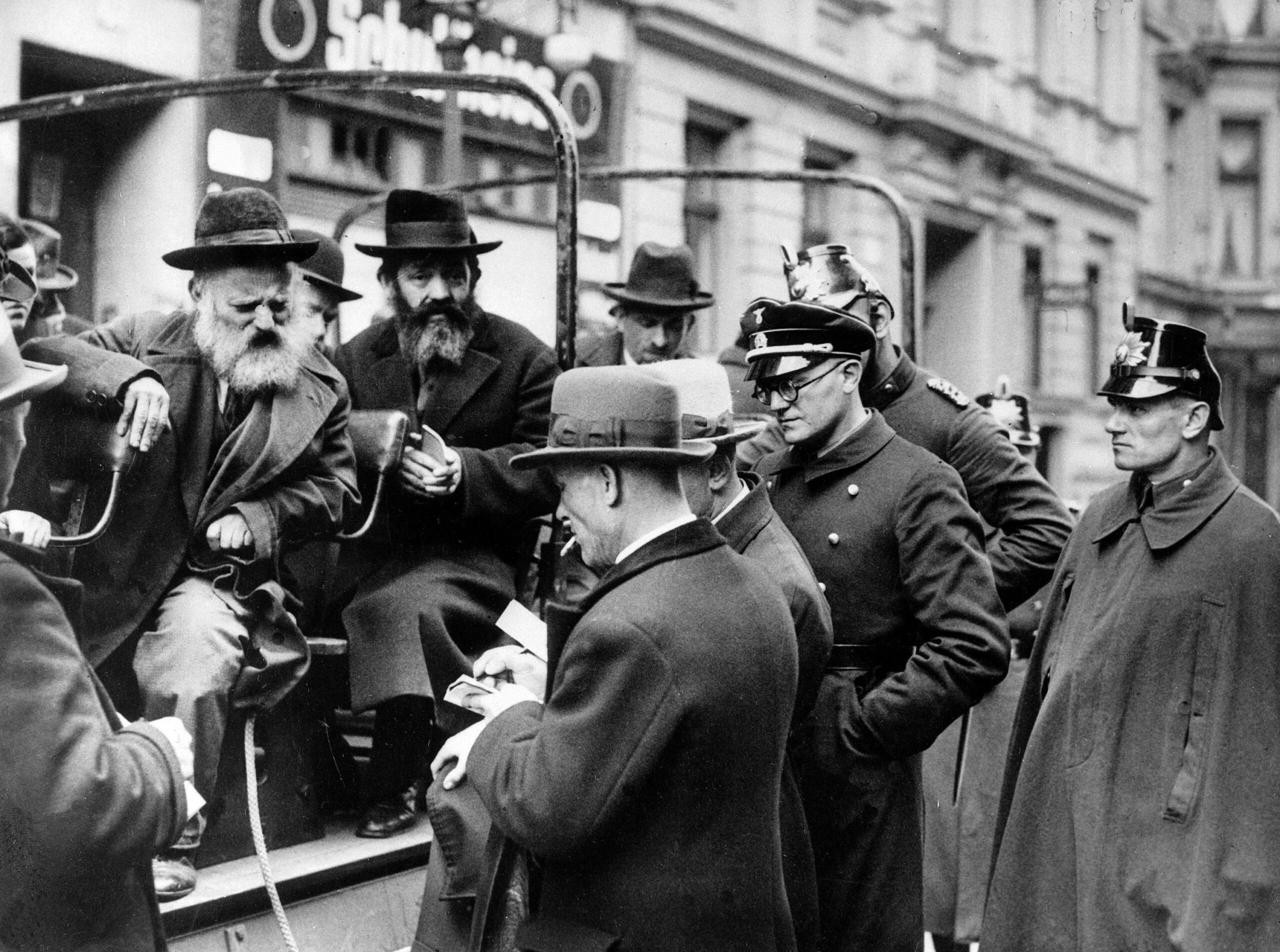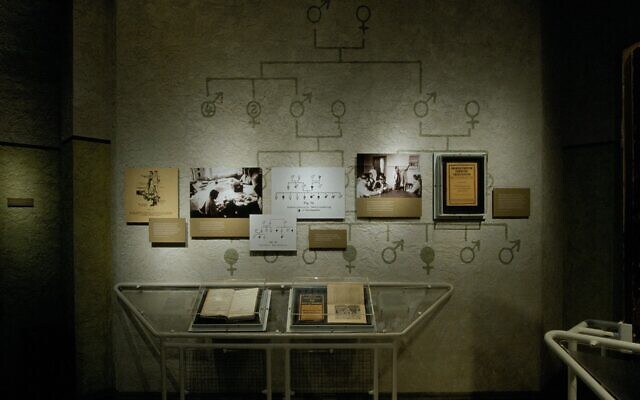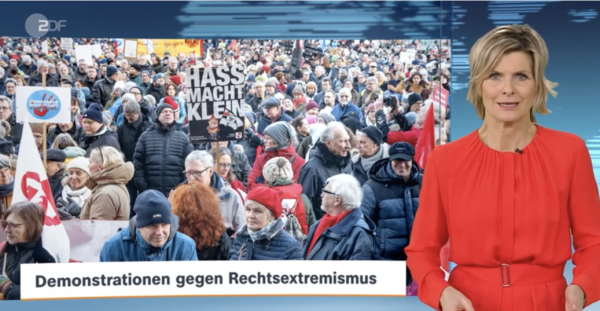How Nazi Billionaires Thrived in Postwar Germany
AN INTERVIEW WITH DAVID DE JONG
In Nazi Germany, industrialists built vast fortunes from slave labor and stolen Jewish property. In postwar West Germany, they were allowed to keep them — with denazification doing little to trouble those who had profited most from the regime.

Adolf Hitler holds a reception for leading figures in German business, including Dr Gustav Krupp (foreground), 1939.
(Ullstein Bild via Getty Images)
10.31.2022
Jacobin
INTERVIEW BYONDŘEJ BĚLÍČEK
In 2019, the German tabloid Bild published shocking revelations about one of the country’s most powerful companies. Bild discovered that Albert Reimann — creator of a family business whose investment firm, JAB Holding, has majority stakes in brands from Dr Pepper to Jacobs Douwe Egberts — was a devoted Nazi who sexually abused, tortured, and humiliated slave workers in his business during World War II. The Reimann family fortune is estimated at €33 billion. The family decided to confront its dark past and donated millions of euros to nonprofit organizations devoted to helping religious and national minorities and seeking out the families of the war prisoners forced to work for the grandfather’s firm.
This was just one recent case showing how Nazi tycoons had been able to cover up their dark pasts in postwar West Germany. One of the journalists who dug into the archives to find out about this history was David de Jong. His new book, Nazi Billionaires, follows the story of men who became part of the Third Reich’s business and financial elite, making their fortunes by stealing Jewish-owned firms, banks, and other assets, as well as exploiting forced and slave labor in concentration camps during World War II. Companies like Siemens, Volkswagen, BMW, Daimler-Benz, Dr. Oetker, Porsche, Krupp, IG Farben, and many more cooperated with the SS, which built “satellite concentration camps” near these private companies’ factories and mines where slave laborers toiled in the most appalling conditions. While, after 1945, legal proceedings were launched against Nazi businessmen, almost none would be punished. Industrialists like Günther Quandt, Friedrich Flick, and Ferdinand Porsche were even allowed to keep their assets and continue business as usual. During the “economic miracle” of the 1950s in Germany, they made even bigger fortunes, and their family businesses remain among the most powerful in Germany. Some have even continued to support far-right political parties.
But how did the relationship between Adolf Hitler and the business and financial elite develop during the interwar period? And why were Nazi businessmen set free after the war, even though their activities were key to the regime’s operations? Jacobin’s Ondřej Bělíček spoke to De Jong about the fate of the Nazi billionaires.
ONDŘEJ BĚLÍČEK
Your book starts with the moment when Hermann Göring and Adolf Hitler invited industrialists for a meeting and asked them to donate huge sums to the Nazi Party. Sometimes it is said that Hitler used these businessmen for his own purposes, but in another sense, he was the figure that they were looking for. How would you describe the relationship between Germany’s financial and industrial elite and the Nazi Party?
DAVID DE JONG
I would agree that in a way most of the men that I write about were sheer opportunists. These families were already very rich before Hitler seized power in 1933, with the exception of the Porsche-Piëch family, which laid the foundations for their wealth during the Third Reich. They were leading business families during the German Empire, the Weimar Republic, the Third Reich, in West Germany, and still today in unified Germany. These businessmen looked to maximize profit, and they thrived in any political system. I would even argue that they would have somehow risen to the top even in a communist system. Their main goal was to maximize profit and expand their business empires and fortunes regardless of the political system.
These men became interested in Hitler and the Nazi Party once it had his first electoral success in Germany in September 1930. It was the period when the Great Depression hit Germany with a wave of discontent and unemployment. The entire business world hung in the balance, and that, for the first time, opened the door for Hitler to Germany’s business community, which had before mostly supported establishment conservative figures. It opened the door for them to have conversations, but they didn’t really start supporting Hitler until he came to power on January 30, 1933. In that meeting that you refer to, he promised them something that he initially delivered on, which is economic and political stability and the rearmament of Germany, which they greatly profited from. They made billions of reichsmarks that were flowing to them from their steel, machinery, and car companies that were retooled to produce weapons and war material.
ONDŘEJ BĚLÍČEK
Hitler gave them the means to make more money and control anything they wanted in exchange for their loyalty.
DAVID DE JONG
He promised to make them more money, but also to protect their interests, because it was a very unstable period. Sure, it was about making more money, but that was always their bottom line. But now it was also really about reviving their companies, getting Germany’s economy back to where it was before World War I and Weimar.
ONDŘEJ BĚLÍČEK
In your book, you follow the story of a few main protagonists among the Third Reich’s financiers, industrialists, and weapons manufacturers, who exploited Nazi race policies and made huge fortunes. Could you describe the main practices that these people used to get what they wanted and make themselves the wealthiest and most powerful people in Nazi Germany?
DAVID DE JONG
There were three ways to profit from the Nazi system. I already mentioned weapons production, which was not criminal, although it was forbidden under the Treaty of Versailles. But from 1935 onward, with the introduction of the Nuremberg race laws, you see the sliding scale that devolves into criminality with the disfranchisement and expropriation of Jewish business owners and families.
Initially, it had this veneer of legality, where they coerced Jewish entrepreneurs to sign over their companies, for far below market value, to the men I write about. Or else these families wanted to sell their companies because they wanted to flee Nazi Germany. But then, as the 1930s go on, you see that it devolves into outright theft and robbery and seizure of Jewish-owned assets. They used the same practice in German-occupied territory across Europe, with business owners who were robbed just because the Germans had occupied their country. And the third way was the mass exploitation of forced and slave labor. After the German invasion into the Soviet Union in 1941, the mass deportation of forced and slave laborers from all across Europe to German factories and mines began. An estimated 12 to 20 million people were deported to work in Germany, and approximately 2.5 million people died due to the horrific working conditions in factories, mines, and labor camps.
ONDŘEJ BĚLÍČEK
The most shocking part of this story is the exploitation of the prisoners from concentration camps as a slave workforce for the private companies. To what extent did these private companies use slave labor — and what were the working conditions?
DAVID DE JONG
There were three ways German companies procured this labor. There were forced laborers who were mainly from Eastern Europe, who were deported by the millions through the German labor front, and paid much less than German laborers and kept in labor camps. Then there were prisoners of war. They were not paid. Thirdly, you had concentration camp labor. That was a collaboration of the SS with big companies like BMW, Daimler, Volkswagen, IG Farben, Siemens, Krupp, Dr. Oetker, and companies controlled by Günther Quandt and Friedrich Flick. These people were slaves, and the aim was to exterminate them through labor. These companies leased prisoners from the SS for four reichsmark per day for unskilled labor and six reichsmark per day for skilled labor. The SS built sub-concentration camps, or “satellite concentration camps,” as they were called, on factory complexes. These camps were guarded by the SS, and there was barely any medical attention and food for the captives. Prisoners were executed, hanged, or shot for the most minor infringements, and they were abused at their workplaces. They didn’t have any protective clothing, so they handled the machinery with their bare hands. There were the most awful working conditions you can imagine.
ONDŘEJ BĚLÍČEK
After the war, trials against the Nazi financial and industrial elite were prepared, and it seemed like justice would be done. But soon it turned out that almost none of the main culprits were sentenced to jail. Could you describe how the trials were initially set up and what determined the outcome of these trials?
DAVID DE JONG
It’s important to distinguish between two things. First, there were the Nuremberg trials. The first and main Nuremberg trial was a major success, and it was focused on the top political and military protagonists of the Nazi regime. And there was the plan to hold trials against industrialists, which would be similar to the first main trial. But the Americans were worried that the Soviets would turn it into an anti-capitalist show trial. At the same time, the British and the French were so economically weak that they didn’t want to put money into another massive tribunal. The Americans decided to go at it alone and staged eleven trials at Nuremberg.
Three of these trials were held against industrialists. They concerned Friedrich Flick and his managers, Alfred Krupp and his managers, and the entire executive board of IG Farben. Those trials were very well prepared, and justice was done. However, the American judges didn’t really get most of the dense evidentiary material, translated from German. The Americans limited the number of trials against industrialists because they didn’t want to put capitalism on trial. At that time, the Cold War was getting started, and the Americans made this policy decision where they wanted to rebuild West Germany as a democratically viable and economically strong state, which would act as a buffer against the Soviet Union and the encroachment of communism.Hundreds of thousands, if not millions, of Germans went free for their crimes.
I understand that policy decision, but where it went completely wrong, in my opinion, was when the Americans, British, and French handed over hundreds of thousands of suspected Nazi war criminals back to West German authorities for so-called denazification processes, which were very flawed legal trials that went on in western Germany between 1945 and 1950. It basically meant that hundreds of thousands, if not millions, of Germans went free for their crimes, because there was no interest on the German side to judge people on crimes that they themselves had committed and sympathies that they had held as well.
The denazification of Germany is a myth. It never took place. There was a continuation of money and power from Nazi Germany to West Germany, and also, to an extent, in East Germany, because former SS officers became high-ranking Stasi and party officials. But it was far more pervasive in West Germany, where — in whatever part of society, whether business, legal, medical, academic, or media — there was no denazification.
ONDŘEJ BĚLÍČEK
It’s shocking that the top leaders of Nazi Germany’s financial elite were allowed to continue doing business as usual.
DAVID DE JONG
Yes, totally. They were allowed to keep all their assets. Except, of course, apart from their assets located in Soviet-occupied East Germany, where the authorities expropriated them and took everything. But in West Germany, they were allowed to keep everything.
ONDŘEJ BĚLÍČEK
As for the trials, I found it odd that investigators weren’t interested in the brutal practices of the industrialists like exploitation of forced slave labor and running subcamps near their factories. Why do you think that was the case?
DAVID DE JONG
It was related to the fact that they didn’t want to put capitalism on trial. Similarly, that’s why they were allowed to keep all their assets, because business had to thrive in West Germany if they wanted it to be an effective buffer against the Soviet Union, and if Western Europe was to be revived again. I think the Americans were worried that, if they investigated the labor practices, it could turn against them, and they could be asked questions like, “OK, but what are you doing in your factories?” or “What about the exploitation of African Americans in your country?” That’s something they wanted to avoid at all costs.
ONDŘEJ BĚLÍČEK
It’s often said that Germany confronted its dark past. The student movement of the 1960s is frequently cited as the moment when German society started to ask difficult questions. After reading your book, I’m not so sure if German society was that successful in this respect. You mention that the first major backlash against the family of one of the most powerful industrialists in the Third Reich, Friedrich Flick, happened in the mid-1990s. And only in recent years does there seem to be a wider debate about history of other major Nazis who built their empires during the Third Reich and continued to do so after the war. Why do you think this is happening now and not much earlier, for instance when the Cold War ended?
DAVID DE JONG
It’s because German business has never been forced to take any kind of moral responsibility for its crimes during the Third Reich. Sure, there were financial compensations, but they always negotiated that they didn’t have to admit any culpability or guilt for the crimes they committed. They paid money, but paying money is something different than actually coming out and taking responsibility for the actions in the past. The lack of responsibility has allowed these business families to sweep the history under the rug up to this day.German business has never been forced to take any kind of moral responsibility for its crimes during the Third Reich.
ONDŘEJ BĚLÍČEK
So when we talk about how Germany managed to confront its past, do you think it’s a myth?
DAVID DE JONG
If you look at a macro level then yes, they’ve reckoned with it pretty well. If you look on a micro level, nobody wants to talk about it. Nobody really wants to talk about what their grandparents did during World War II. This debate in the 1960s was more of a generational conflict. People who were born after the war became very critical toward power structures that were still in place. Very violent movements were formed from that debate, like the Rote Armee Fraktion, but they were mainly challenging the conservatism and the lack of historical reckoning that Germany had, which didn’t much occur in the business world, which was still a very conservative world. That reckoning really didn’t come until the 1990s or the 2000s. And in my opinion, it’s still far from being fulfilled.
ONDŘEJ BĚLÍČEK
How did German society react to the findings that recently appeared in the newspapers about the dark Nazi past of certain billionaire companies?
DAVID DE JONG
The problem in Germany is that the public has become a little bit desensitized to revelations regarding its Nazi past. You notice that people are inundated with such revelations on a daily basis. They have become used to them, and they aren’t shocked.
ONDŘEJ BĚLÍČEK
Some of the families of former Nazi businessmen took public responsibility for the past following pressure from media and the public. In your book, you particularly mentioned the damage control by the Reimann family business as an example of how to deal with findings about a firm’s dark past. Why do you think the steps they took are the best way to deal with it?
DAVID DE JONG
Because they’re transparent about the fact that their father and grandfather were committed Nazis. Also, they’ve renamed their foundation after their other grandfather, who turned out to be murdered in the Holocaust. My point is that there should be more of this historical transparency and taking responsibility for the past. But if you name your foundations after Herbert Quandt or Friedrich Flick or Ferdinand Porsche, who were committed Nazis or voluntary SS officers who committed war crimes on a large scale, than you can’t celebrate their business successes while leaving out their Nazi history.
ONDŘEJ BĚLÍČEK
What reaction did you get from the public on your book?
DAVID DE JONG
There have been two major developments since the book came out. First, the BMW foundation Herbert Quandt was inundated with angry letters from people who received money from that foundation but felt lied to because they had been given money in the name of a Nazi war criminal. So the foundation came out with a statement and promised change, but BMW is stuck between conservative shareholder Stefan Quandt, who honors his father, and angry foundation members, who are not very powerful but were very public about their anger. Second, Porsche is now negotiating with the heirs of Adolf Rosenberger, the company’s cofounder, who was pushed out of Porsche in 1935 and erased from Porsche company history for being Jewish. So they want to restore his place in Porsche company history. It’s also due to the fact that they have so many financial interests on the line right now, with the company going to the stock exchange and being valued at €80 billion, which is a massive amount.
CONTRIBUTORS
David de Jong is author of Nazi Billionaires.
Ondřej Bělíček is editor of Czech online daily A2larm.cz

https://www.wsws.org/en/articles/2022/11/02/nazi-n02.html In “Nazi Billionaires: The Dark History of Germany's Wealthiest Dynasties,” published in late May of this year, Dutch financial journalist David de Jong shows what the real attitude of...
https://www.amazon.ca/Nazi-Billionaires-Germanys-Wealthiest-Dynasties/... “Lucid, and damning, David de Jong's Nazi Billionaires unearths decades of family secrets and exposes the tainted origins of several of the world's most significant dynastic fortunes. As …
https://daviddejong.net/about David de Jong is a journalist and author. His first book, Nazi Billionaires, is published in the US and the UK by HarperCollins. He spent four years reporting from Berlin while researching and …
"Lucid, and damning, David de Jong’s Nazi Billionaires unearths decades of family secrets and exposes the tainted origins of several of the world’s most significant dynastic fortunes. As …
https://www.goodreads.com/book/show/58312061 In this landmark work of investigative journalism, David de Jong reveals the true story of how Germany’s wealthiest business dynasties amassed untold money and power by abetting the …
https://openlettersreview.com/posts/nazi-billionaires-by-david-de-jong By David De Jong Mariner Books, 2022. Journalist David De Jong spent years investigating the Nazi
